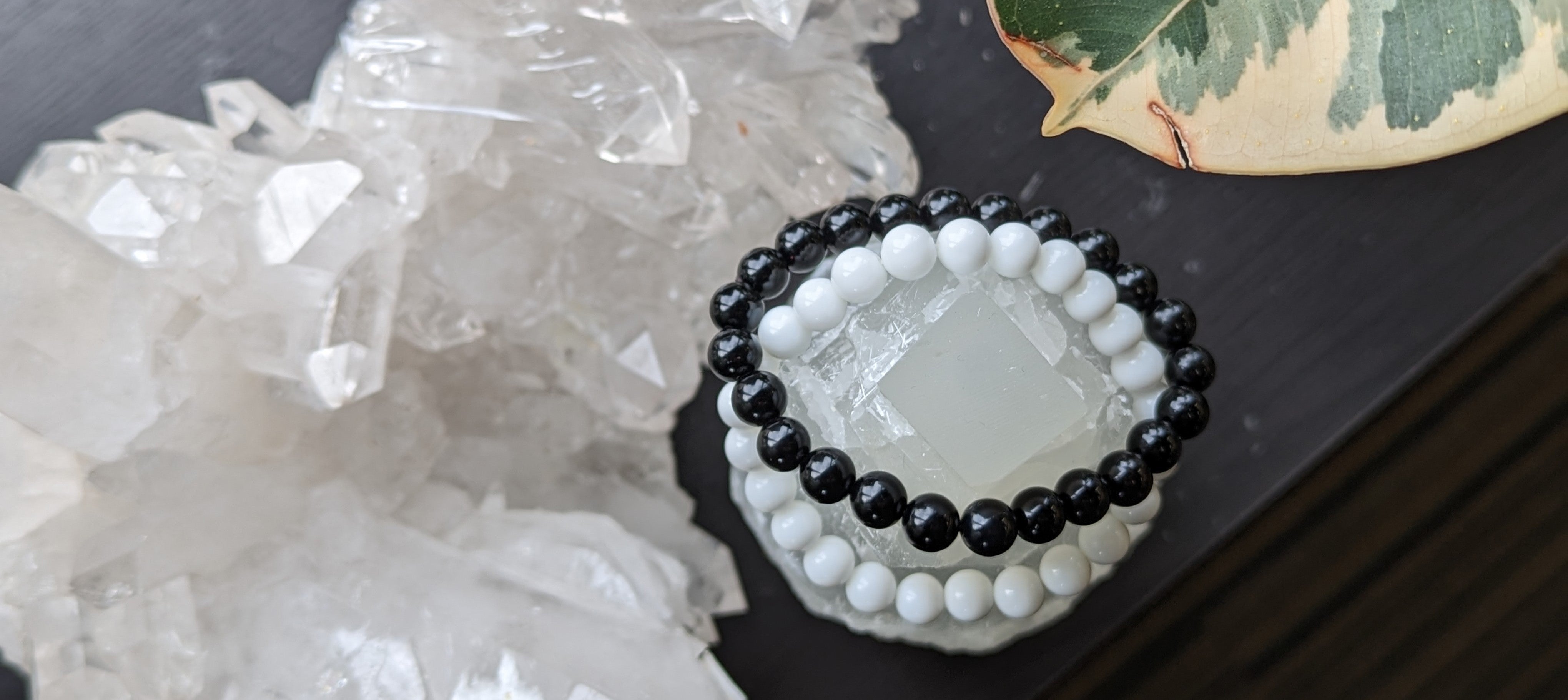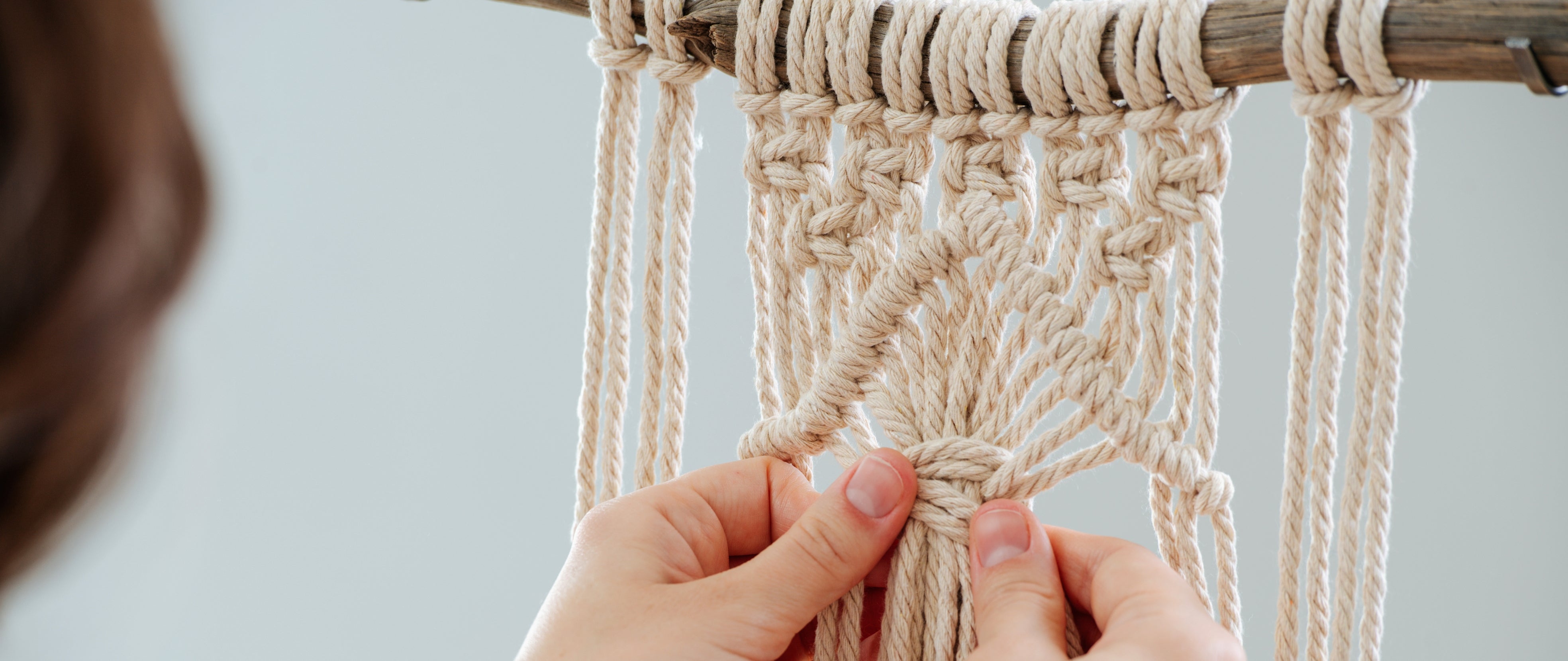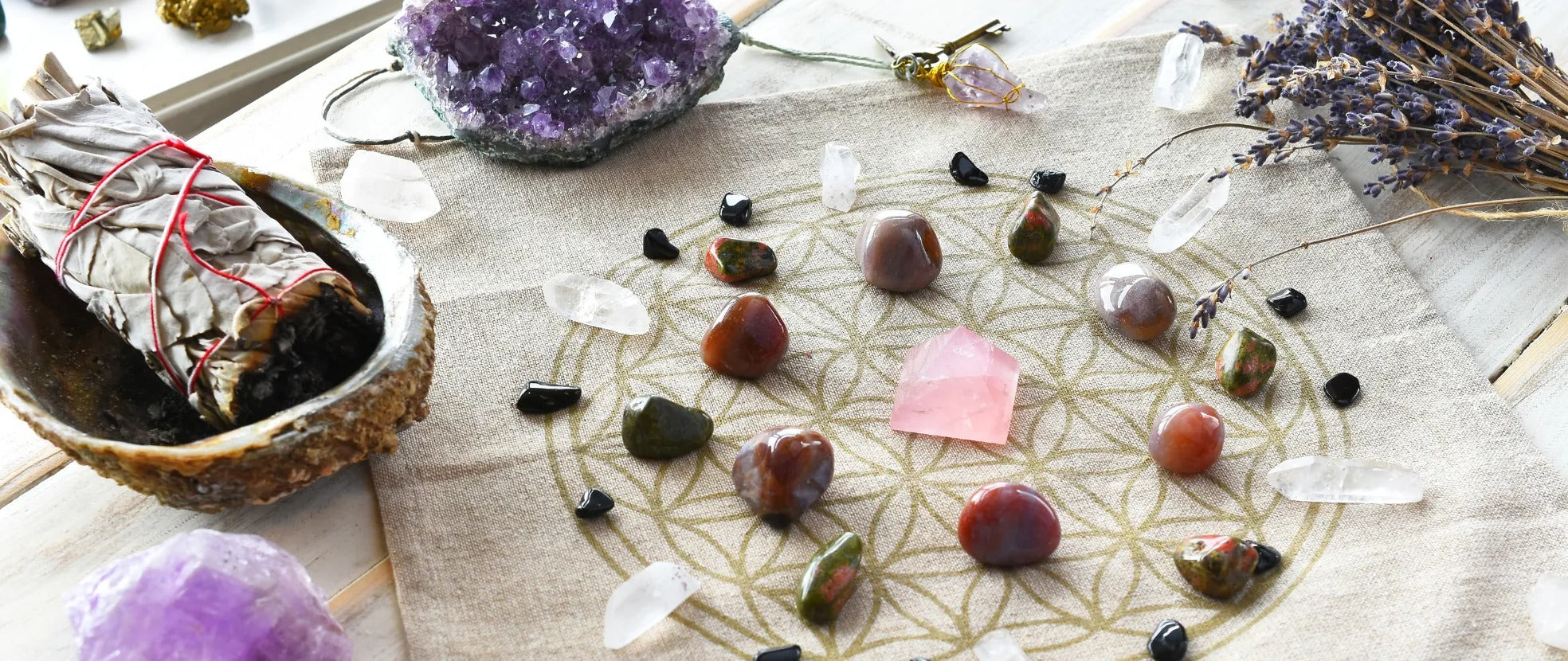New Age spirituality has gifted us with many energy cleansing rituals to revitalize ourselves and our spaces. However, we've focused too much on what these rituals could do for us that we forgot to look into the rich history that brought us these rituals in the first place.
Smudging, incense burning, Reiki, and chakra healing have varied historical backgrounds. And to give due respect to these rituals as we practice them, it's important to familiarize ourselves with how they came to be, who invented them, and what significant events led to their creation.
Are you ready to travel through time? Let's get to know the history of the 4 widely practiced energy cleansing rituals in our time.
1. Smudging/Smoke Cleansing
Wherever we go, thoughts, intentions, and energies from people and objects rub off on us. These can be positive, but they can also be negative and sometimes harmful to our well-being.
Regular smoke cleansing helps ward off these unwanted energies. It cleanses our aura, dispels negativity, and reenergizes us with fresh positive energy.
This practice of prayer and burning aromatic plants such as cedar, sage, sweetgrass, lavender, pine, and mugwort is an ancient ritual that originated in Native America many years ago. It is traditionally known as smudging.
Indigenous peoples in Canada and various parts of the world use the ritual to shield themselves from negative energies and evil spirits. They also believe the smoke that comes from burning sacred plants assists in invoking the presence and guidance of the Divine.
Other benefits of smudging include body and soul purification, mental clarity, and physical healing.
But in contrast to the wonderful benefits it offers, did you know that a grim reality exists with practicing smudging?
Before it became mainstream (especially among non-Native people), it was illegal for Indigenous groups in Canada to practice their religious and cultural activities (including smudging) due to colonization and assimilation policies.
Natives were even jailed and killed for simply upholding their customs. Until today, Indigenous peoples are still fighting for their rights to freely perform their rituals.
Because of these struggles, when non-Native people smudge their spaces without regard for the sacred and original intent of the ritual, it downplays the cultural significance of smudging ” a classic case of cultural appropriation.
Cultural appropriation is the unauthorized act of taking cultural expression, traditional knowledge, or artifacts of another culture that has been oppressed, discriminated, or persecuted.
What makes cultural appropriation more alarming is the improper harvesting of medicinal plants, especially sage. According to Native traditions, when picking sage the root must be left in the soil and the harvester should say a gratitude prayer for the harvest. This is to ensure that the plant grows back, maintaining future supply.
To people outside of the Indigenous community, smudging may be a harmless self-care ritual. But to Native peoples, it's a representation of their faith, culture, heritage, and identity.
Been using herbs to clear away negativity from your space? There's no need to give up the ritual altogether out of awareness and responsibility.
You can respect Native cultures by:
- Performing smoke cleansing instead of smudging. Whereas smudging has its roots in the Indigenous cultures, smoke cleansing isn't tied to any group or culture. Meaning, anyone can perform it. Smudging and smoke cleansing may use similar elements, but each serves a different purpose.
- Learning more about herbs production and sourcing, appropriation, and responsible smoke cleansing
- Supporting brands that support Indigenous cultures and source their herbs ethically and responsibly
- Using sacred herbs used by your ancestors
- Being intentional about incorporating smoke cleansing into your life
The next time you light up your herbs, pay homage to the Native peoples who fought hard and literally sacrificed their lives so we could practice smoke cleansing freely today.

2. Resin Incense Burning
Resin incense (from the Latin word incindere, meaning burning) is derived from small pellets of hardened plant secretions or saps. The resin is usually extracted from the bark of a woody plant, the buds of a shrub, or the flowers of a herb.
The term resin incense’‘ also refers to herb blends that consist of barks, leaves, flower petals, and wood pieces. Like loose and bundled herbs used in smoke cleansing, these plants release a pleasant aroma which soothes the senses and calms the mind and body.
Specifically, these are the benefits linked to burning incense to one's well-being:
- Resins produce a scent that activates desirable thoughts, emotions, and states of being. In aromatherapy, herbs are used to promote relaxation, creativity, increased concentration, increased consciousness, and sexual arousal among others.
- It purifies the air and removes allergens
- Harmonizes the mind, body, and spirit
- Soothes the emotion, heightens awareness, and sets the right ambiance for focus and solitude (which makes incense burning an ideal pre-meditation ritual)
Incense burning began approximately 6,000 years ago. With roots in ancient Egypt and Babylon, incense is among the first fragrant materials humans learned to use in religious rituals.
Egyptians used incense to deodorize dead bodies during mummification, drive away demons, and connect with their gods. Babylonians employed incense in offering prayers or divining oracles.
Popular incense types like frankincense and myrrh were also mentioned 20 times in the Bible as among the gifts the Magi offered to the baby Jesus. Indeed, the value and form of incense can vary from one culture to another depending on their belief and customs.
But one thing is sure: Not all resins are equal. Each type of resin is classified according to plant type and genus, or based on where they originated. Each variety also offers a unique set of benefits.
Below are some examples:
- Palo santo - Clears negative energy and helps relieve pain, stress, and headache.
- Dragon's Blood - Produces a soft and sweet scent with some earthy tones that elicits healing and increased contemplation.
- Benzoin - This resin is burned to clear negative energy, balance the emotions, and soothe sadness, anger, greed, loneliness, and weariness. It's also believed to attract prosperity. Benzoin resin comes from the trunk of trees that belong to the styrax family.
- Copal - A fresh-smelling, fast-burning resin used to purify energies, raise vibrations, attract love, reveal invisible energies in a given space, and inspire insights into the Divine.
- Frankincense - Induces tranquility and deepens spiritual experiences. It also increases strength and motivation on days when you're low on energy and inspiration.
- Myrrh - Enhances spiritual awareness before and during rituals. Myrrh is also used to bring about happiness, confidence, strength, and stability.
To know more about resin incense, read this article about the origin, uses, and ways to burn incense.

3. Reiki Practice
While the 2 previously mentioned practices clear out negative energies with the use of fragrant plants, Reiki induces healing by removing energy blocks. It operates on the principle that a person achieves peak wellness when their energy flows smoothly throughout their body.
The term Reiki comes from the Japanese words rei (universal) and ki (life energy). Combined, reiki means mysterious atmosphere, miraculous sign. Reiki practitioners believe that enhancing energy flow around the body stimulates healing and relaxation, relieves pain, and minimizes symptoms of illnesses.
How did this practice come about?
People have been practicing Reiki for around 2,500 years. But the most recent form of Reiki, the Usui Reiki Ryoho, was developed in the 1920s by Mikao Usui. Usui, a spiritual aspirant and a married lay monk, conceived his practice at a time where Buddhist, Shinto, and Taoist practices were the prevailing themes in Japanese spirituality.
Usui travelled extensively across Japan in the last 4 years of his life. During this time, he taught Reiki to 2,000 students and trained 16 individuals as Reiki masters. One of these master students was Chujiro Hayashi who would be responsible for bringing the Reiki practice to other parts of Japan. Hayashi's student, Hawayo Takata, later brought the practice to Hawaii and the US mainland in 1937.
Reiki is also known as palm healing and hands-on healing. It uses various healing techniques such as beaming, centering, clearing, extracting harmful energies, infusing, and smoothing and raking the aura.
Some practitioners complement their practice with crystals and chakra healing wands to better control the flow of energies. There are also Reiki experts who don't rely on other instruments beyond themselves.
Reiki is used to treat health conditions including:
- Anxiety
- Depression
- Stress
- Chronic pain
- Fatigue
- Infertility
- Heart disease
- Inflammatory bowel diseases (IBD) including Crohn's disease
So what exactly happens during a Reiki session?
- The practitioner gives the session in a peaceful and private environment, although it can be done anywhere.
- Fully clothed, the client is seated in a comfortable chair or is made to lie on a table.
- The practitioner holds their hands above a wounded, burned, or injured body part (if there's any).
- As they hold their hands over the body, an energy transfer occurs. The practitioner may report a feeling of warmth or a tingling sensation in their hands. Then they hold each hand until the energy has stopped flowing.
- Once the practitioner senses that the heat or energy in their hands has gone, they remove their hands and hold them over a different part of the body.
There's little evidence that suggests the practice provides any medical benefit. But people experiencing the above health concerns may consider trying Reiki alongside their doctor-prescribed treatments to help them relax.

4. Chakra Healing
Chakra is a term often thrown around in metaphysical space. Yet, there's only a few mention of its history and origin. Where does chakra come from, really? And who invented it?
A sanskrit word meaning circle or wheel, chakra is a spiritual and philosophical concept in Indian religion and politics. The chakras are energy centers in the body located in the major branches of the nervous system, starting at the base of the spinal column up to the top of the skull.
Each chakra is a center of activity that receives, assimilates, and expresses life force energy, according to the New World Encyclopedia. In other words, chakras provide the network of energy flow that controls a person's physical, mental, emotional, and spiritual well-being.
Scholars believe that knowledge of the chakra system was originally passed down to generations through oral tradition. It was made possible by Aryans, an Indo-European people who settled in prehistoric Iran and the northern Indian subcontinent.
Chakra was mentioned in the Vedic texts in ancient India in 1,500-500 BCE. It first appeared in the genre called Upanishads which talked about Hindu meditation, philosophy, and spirituality.
Since then, the history of chakras has evolved so much. It then became more prominent in the medieval period in Buddhist and Hindu traditions. This development pretty much led to the chakra concepts we know today, including life force energy and the subtle body.
There also exist various models of the chakra system around the world. The system which consists of 6 or 7 chakras (a model developed in the 11th century CE) along the body's axis is the most widely accepted one. It's also the model adopted by many yoga traditions.
This model is characterized by the following:
- Sahasrara (crown chakra) - The chakra of consciousness located at the top of the skull. It's in charge of secreting hormones to communicate to the endocrine system and connecting to the central nervous system.
- Ajna (third eye chakra) - Connected to the pineal gland and is known as the chakra of light, awareness, and time. It also regulates the sleeping and waking patterns.
- Vishuddha or vishuddhi (throat chakra) - Linked to communication and self-expression. It is found parallel to the thyroid which is responsible for growth and maturity.
- Anahata (heart chakra) - This chakra connects to love, compassion, and the whole range of emotions. It is located in the chest and is linked to the immune system.
- Manipura or nabhi (solar plexus chakra) - Related to the transition of basic to complex emotions, energy, digestion, and assimilation. It is also responsible for digestion and the conversion of food into energy. It is located in the mouth of the stomach.
- Swadhisthana (sacral chakra) - The chakra of creativity and sexuality located in the groin. It is related to the testicles and the ovaries involved in reproduction.
- Muladhara (base or root chakra) - Located in the spot between the anus and the genitals, the root chakra is linked to security, survival, and instinct. It's also connected to ejaculation and sexual act in males.
When these chakras are open and balanced, energy is able to flow smoothly through our minds and bodies.
But when any of these energy centers are blocked, it results in energy stagnation. This could cause certain physical, mental, emotional, and spiritual ailments depending on which chakra is blocked.
Healing crystals, smoke cleansing, and meditation are often used to unblock and reenergize these chakras. Each energy center is represented by different colours. And the appropriate crystal to use must have the colour of the chakra you want to heal.
- Crown (white or violet) - Selenite for clearing negative energies
- Third eye (indigo) - Amethyst for clarity
- Throat (blue) - Lapis lazuli for enhanced confidence and attracting abundance
- Heart (green) - Green calcite (also rose quartz as it's the ultimate heart crystal) for increased ability to give and receive love
- Solar plexus (yellow/gold) - Tiger's eye
- Sacral (orange) - Carnelian for optimism and releasing negative self-talk
- Root (red) - Red jasper for strength and protection

Sources:
Chakra - New World Encyclopedia. (n.d.). New World Encyclopedia. Retrieved June 9, 2022, from https://www.newworldencyclopedia.org/entry/Chakra
Cuncic, A. (2022, March 15). What Is Cultural Appropriation? Verywell Mind. Retrieved June 8, 2022, from https://www.verywellmind.com/what-is-cultural-appropriation-5070458
How Does Reiki Work? (n.d.). Taking Charge of Your Health & Wellbeing. Retrieved June 8, 2022, from https://www.takingcharge.csh.umn.edu/explore-healing-practices/reiki/how-does-reiki-work
Incense. (n.d.). Encyclopedia Britannica. Retrieved June 8, 2022, from https://www.britannica.com/topic/incense
Lee, P. (2021, April 15). A Beginner's Guide to Chakra Healing. Vogue. Retrieved June 9, 2022, from https://www.vogue.com/article/precious-lee-chakra-guide
mindbodygreen. (2021a, April 7). Warning Signs Your Chakras Are Out Of Balance. Retrieved June 9, 2022, from https://www.mindbodygreen.com/0-13433/warning-signs-your-chakras-are-out-of-balance.html
mindbodygreen. (2021b, October 29). A Beginner's Guide To The 7 Chakras. Retrieved June 9, 2022, from https://www.mindbodygreen.com/0-91/The-7-Chakras-for-Beginners.html
Missing and Murdered Indigenous Women and Girls in Canada. (n.d.). The Canadian Encyclopedia. Retrieved June 8, 2022, from https://www.thecanadianencyclopedia.ca/en/article/missing-and-murdered-indigenous-women-and-girls-in-canada
Newman, T. (2021, July 27). Everything you need to know about Reiki. Medical News Today. Retrieved June 8, 2022, from https://www.medicalnewstoday.com/articles/308772#what-happens
O, J. (2022, March 29). Origins of Chakras: Separating History From Mystery. L'Aquila Active. Retrieved June 9, 2022, from https://laquilaactive.com/origins-of-chakras-separating-history-from-mystery/
Smudging. (n.d.). The Canadian Encyclopedia. Retrieved June 8, 2022, from https://www.thecanadianencyclopedia.ca/en/article/smudging
Tracy, J. (2020, October 7). Chakras Origin Chakra History. 7 Chakra Store. Retrieved June 9, 2022, from https://7chakrastore.com/blogs/news/chakras-origin-chakra-history
Usui Shiki Ryoho Reiki Usui Shiki Ryoho Mikao Usui Reiki Usui system. (n.d.). Reiki Association. Retrieved June 9, 2022, from https://www.reikiassociation.net/usui-shiki-ryoho.php#:%7E:text=Usui%20Shiki%20Ryoho%20%2D%20the%20Usui,healing%20led%20him%20to%20Reiki
Where Does Reiki Come From? (n.d.). Taking Charge of Your Health & Wellbeing. Retrieved June 8, 2022, from https://www.takingcharge.csh.umn.edu/where-reiki-from
White, A. (2020, June 22). 11 Benefits of Burning Sage, How to Get Started, and More. Healthline. Retrieved June 8, 2022, from https://www.healthline.com/health/benefits-of-burning-sage#:%7E:text=Where%20did%20the%20practice%20originate,to%20thank%20for%20its%20use





